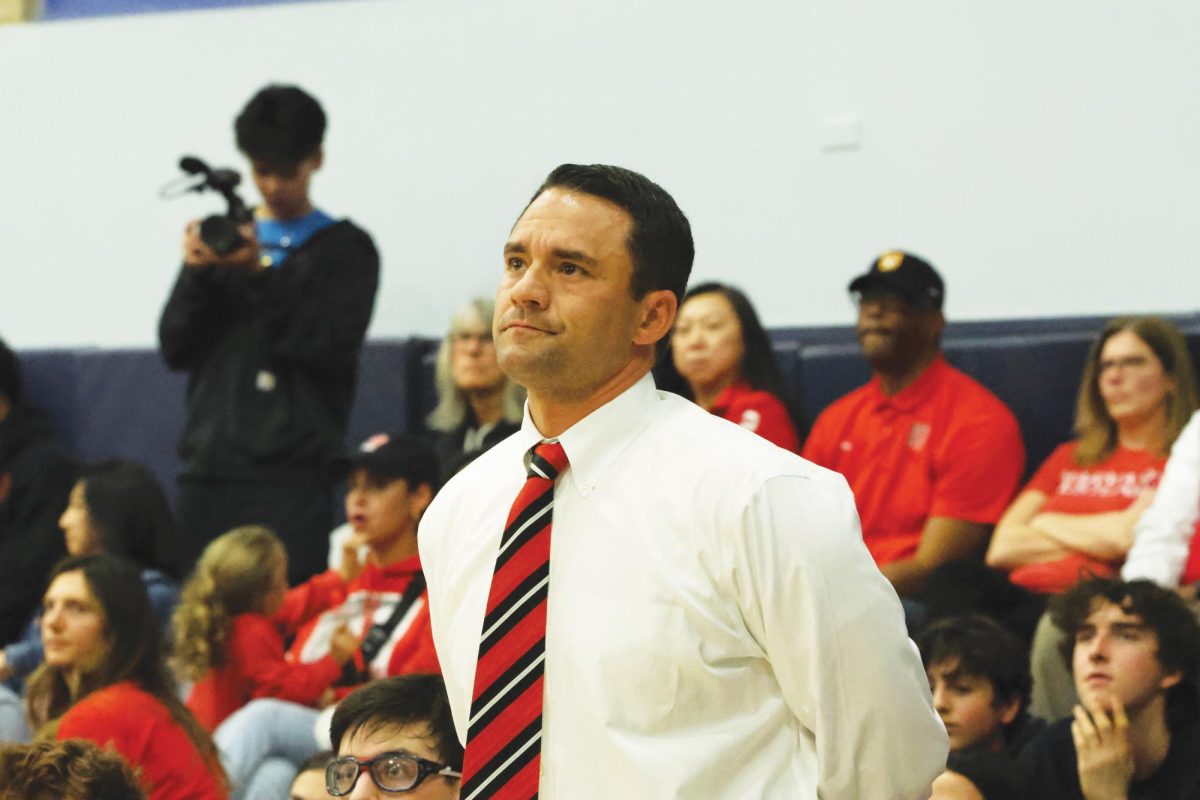By Jessica Barzilay
Nearly 30 years ago, science teacher Walt Werner helped to develop a new lab experiment for eighth graders at Westlake School, in which the students could determine their own blood pressure. Teachers excitedly put together the procedure, purchased the equipment and prepared the apparatus for the class. However, the experiment required complete silence, one variable Werner could not control.
“In a room full of 18 eighth grade girls, of course it wasn’t quiet — it was a disaster,” he said, laughing. “But that’s how it goes.”
Over the course of the school’s history, lab assignments have grown with the times, progressing with technology and the constantly evolving role of science in society.
“If you think of a lab you want to do, you can go do it,” AP and regular Physics teacher Jesse Reiner said. “We’re allowed to try something and have it fail.”
In fact, the process of teachers creating lab projects bears a remarkable resemblance to that of students conducting a lab.
A lab starts with a purpose, a hypothesis to prove or disprove. Then comes the method, the description of how the experiment will be conducted. Results, analysis and conclusion follow. From there, the teachers can evaluate whether the experiment should be inocorporated.
Reiner said some of the constant modification comes from the content change of each lab’s goals. There is more than one benefit from conducting a practical experiment for high school scientists, he said, rather an array of challenges to face and skills to exercise.
“A lot of it is creative thinking, problem solving and proving to the students that what we’re doing is real,” Reiner said.
Chemistry teacher Krista McClain also said the kinesthetic quality of lab work can reinforce lessons from class that would otherwise remain abstract or theoretical.
“Through labs, students experience a hands-on approach to their learning and eventually develop a greater appreciation for the course,” she said.
From data analysis to evaluating results, the goals of a lab can range across a broad spectrum. Often, the labs teach skills the students aren’t even aware of learning.
“We hope they learn scientific writing and how to communicate in science, which is an important skill,” Reiner said.
Conversing and thinking in terms of science is a talent Werner has found increasingly important in modern society, since so much of today’s innovation is rooted in technology, he said.
The accelerated pace of technological developments has caused many alterations to lab procedures.
In physics classes, certain devices developed 20 years ago, like the Photogate and Ultrasonic locaters, revolutionized the art of labs by allowing scientists to track moving objects with precise short-term measurements. On a larger scale, Reiner notes that Microsoft Excel and its capabilities allow students in physics and AP Environmental Science to explore a different kind of analysis without linearizing all data for the purpose of interpretation.
“The physics lab program would be very fundamentally different without Excel’s graphical analysis,” Reiner said.
In Human Anatomy and Physiology, Werner was able to harness the new technology to demonstrate some of the pitfalls of students’ dependence on digital and mobile devices.
Using the basic format of measuring reaction time, Werner compared how fast the brain processes information normally to the reaction time of someone using a cell phone or sending a text message. When students compiled and analyzed their data, “that was a real eye opener,” he said.
For regular class tracks, teachers enjoy greater liberty in designing lab projects than the instructors of advanced placement courses do.
The national requirements of an AP curriculum inhibit the teachers’ freedom to be creative. For example, AP Physics B students conduct only 12 labs during a year, while those who take regular physics complete 26.
Last year, 12 new labs were introduced to the regular physics curriculum. The labs in AP classes differ not only in quantity but also in quality from those in standard level courses.
While the majority of AP Physics B labs are verifications of known conditions, in regular physics, students can experiment and “get out of the habit of thinking data should come out a certain way,” Reiner said.
Both Reiner and AP Physics B teacher Antonio Nassar see the opportunity to analyze errors in verification experiments as valuable, despite the limitations of proving an accepted hypothesis. In some cases, students conduct 300-year-old labs, and “use better technology to gather data, but we don’t have to have a machine take over because you lose the chance to make mistakes,” Nassar said.
While not all labs are 300 years old, certain experiments have remained unchanged.
For example, science teacher Blaise Eitner adapted Oceanographic Biology into an entirely new course, Oceanography and Marine Biology, during his second year. He developed several new activities that continue to comprise part of the curriculum. Most notably, Eitner supervises the dissection of bony fishes, clams, crayfish, sea stars and squids, while he annually dissects a shark as a demonstration.
“You’d be amazed how much students can learn by looking at these specimens in 3-D,” Eitner said.
Another interactive study of animal bodies is the staining and clearing of preserved rats in Human Anatomy. For the first experiment, the students spent three to four weeks examining the skeletons of purple-dyed rats.
Werner, who has led this lab since the course was introduced, said he has seen students take the preserved rats to college and parents, who place the specimens in their office for show.
Melanie Chan ’12 said her experience in science classes at the Upper School has challenged her to grow and better understand the material.
“I think I learn more in depth with labs because I actually have to think through the entire process and put together the entire scheme of things,” she said.




































